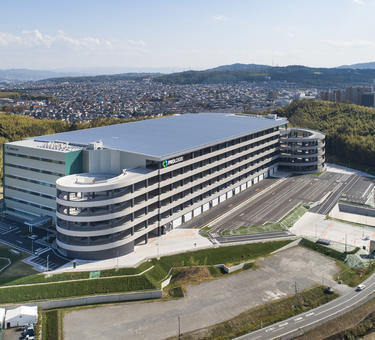Prologis has released a new report that summarizes the economic impact of its worldwide operations.
Prologis commissioned independent advisory firm Oxford Economics to update the company’s “Future Flow of Goods” study, first conducted in 2017. The revised report reveals Prologis’ growth amidst changes in the logistics real estate landscape.
“This study shows just how critical logistics real estate is to the vitality of the global economy,” said Prologis chairman and CEO Hamid R. Moghadam. “Every day, Prologis sees many of the goods that make modern life possible flow through our distribution centers, which in turn underscores the interconnected nature of global trade.”
Key insights from the new study include the following:
-
The current economic value of goods flowing through Prologis facilities worldwide is $2.2 trillion, a 69% increase over 2017.1 This figure underscores the diversity of the Prologis customer base and the scale and value of the company’s global real estate portfolio.
-
This $2.2 trillion in throughput represents 3.5% of the gross domestic product (GDP) of the 19 countries in which Prologis operates. In 2017, the company’s portfolio spanned 684 million square feet, and throughput represented 2.4% of the GDP of those same 19 countries.2 The increase speaks to Prologis’ growth strategy and the scale of its platform, which comprises nearly 1 billion square feet today.
-
The flow of goods through Prologis buildings represents 2.5% of global GDP—4.4% of global household consumption.2 In 2017, the flow of goods was 1.7% of global GDP.
-
Prologis is a powerful supporter of jobs in its communities; each day, approximately 850,000 people go to work under Prologis roofs, a 57.4% increase over 2017.3
Visit https://www.prologis.com/about/economic-impact-report to view and download the full report.
1 Based on 2019 data per Oxford Economics report
2 Per Oxford Economics, it is important to note that GDP represents the total value of all final goods and services production. Some warehouses may be used to store intermediate goods (i.e. components used in the production of final goods), and of course services do not need to be stored, and a single good will often be stored in multiple warehouses on its way to final consumers.
3 Based on estimates available in 2017, Oxford Economics assumed that direct employment at Prologis warehouses would be one worker for every 743 square feet (69 square meters) of warehouse space globally. Subsequent research by Prologis has refined this estimate and resulted in the country-specific estimates of 1,000-1,900 square feet per direct employee. Based on the original assumption, we estimated total direct employment of 816,200 workers in Prologis warehouses in July 2017. Updating the previous assumption, however, Oxford Economics would estimate total employment in Prologis warehouses in 2017 of 539,900.
